Stack push and stack sequence
Title Description:

Review the basic structure of the stack:
The stack structure is first in first out, last in first out
Stack in sequence: [1,2,3,4,5] stack out sequence [4,5,3,2,1], does it belong to the same stack in and out sequence?
There may be hints in the stack:
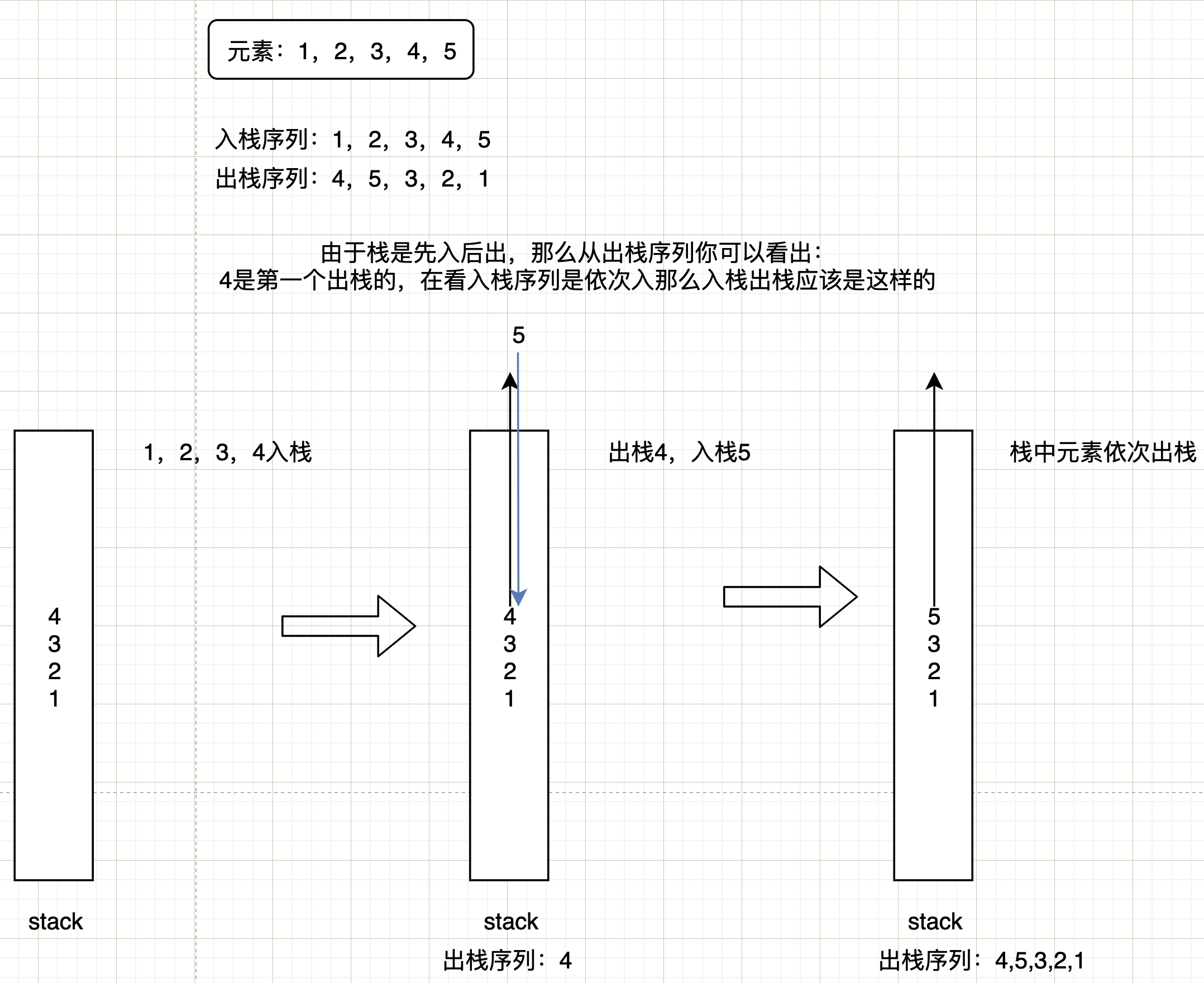
Idea:
- Use a stack simulation to realize stack entry, and compare whether the element is out of the stack in advance with the out of the stack sequence
code:
bool IsPopOrder(vector<int> pushV,vector<int> popV)
{
if(pushV.size()==0&&popV.size()==0)//exceptional case
{
return false;
}
int push_index=0,pop_index=0;
while(push_index<pushV.size())//When there are no elements in the stack sequence, the result should be given, because if the simulation stack and the stack sequence are not matched, it will be false
{
st.push(pushV[push_index++]);
while(!st.empty()&&st.top()==popV[pop_index])//Note that always equal stack may lead to cross-border access due to empty stack
{
st.pop();
pop_index++;
}
}
return st.empty();//Empty means full compliance
}
private:
stack<int>st;
};
Consolidation of linked lists
Title Description:
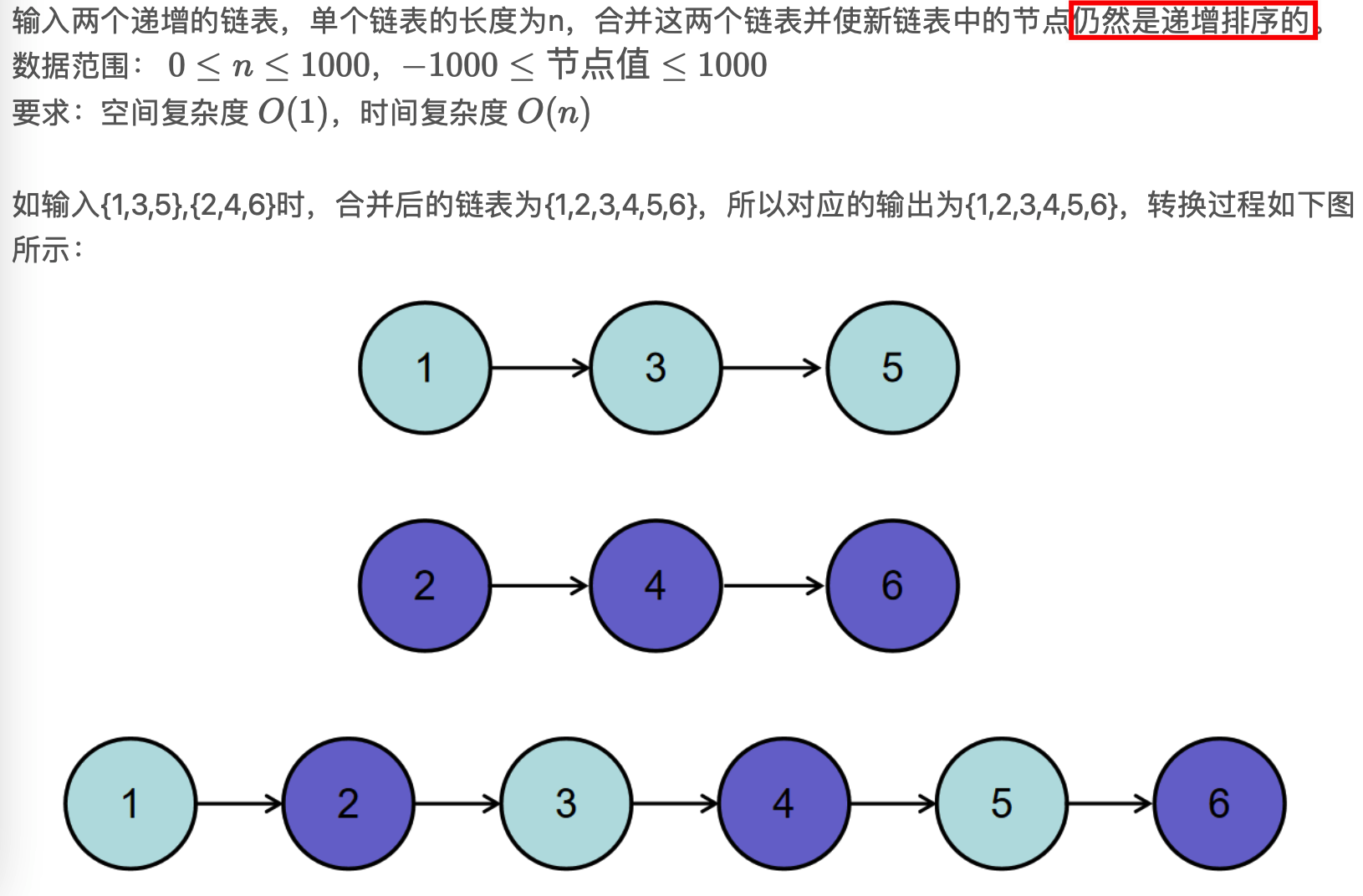
Idea:
- Merge and compare size insertion method
Open a new linked list as a container and insert the smaller values into the linked list in turn
code:
ListNode* Merge(ListNode* pHead1, ListNode* pHead2)
{
//exceptional case
if(pHead1==nullptr)
{
return pHead2;
}
if(pHead2==nullptr)
{
return pHead1;
}
//Open up a new linked list as a container and take the lead in the linked list (sentinel position)
ListNode* ret=new ListNode(0);
ListNode* NewHead=ret;
while(pHead1&&pHead2)//Comparing the size requires two linked lists to have values
{
if(pHead1->val<pHead2->val)//Linked list 1 is smaller than linked list 2
{
ret->next=pHead1;
pHead1=pHead1->next;
ret=ret->next;
}
else//Linked list 2 is smaller than linked list 1
{
ret->next=pHead2;
pHead2=pHead2->next;
ret=ret->next;
}
}
//exceptional case
if(pHead1)//When all nodes of linked list 2 are inserted into the container, linked list 1 also has elements
{
ret->next=pHead1;
}
if(pHead2)//conversely
{
ret->next=pHead2;
}
return NewHead->next;//Return linked list
}
- Recursive comparison method
Additional description and explanation of sentinel position and lead linked list
This node is not the element in the linked list. Its function is to delete the element of a node conveniently. You can regard it as the old hen in the game of Eagle catching chicken
Postorder traversal sequence of binary search tree
Title Description:
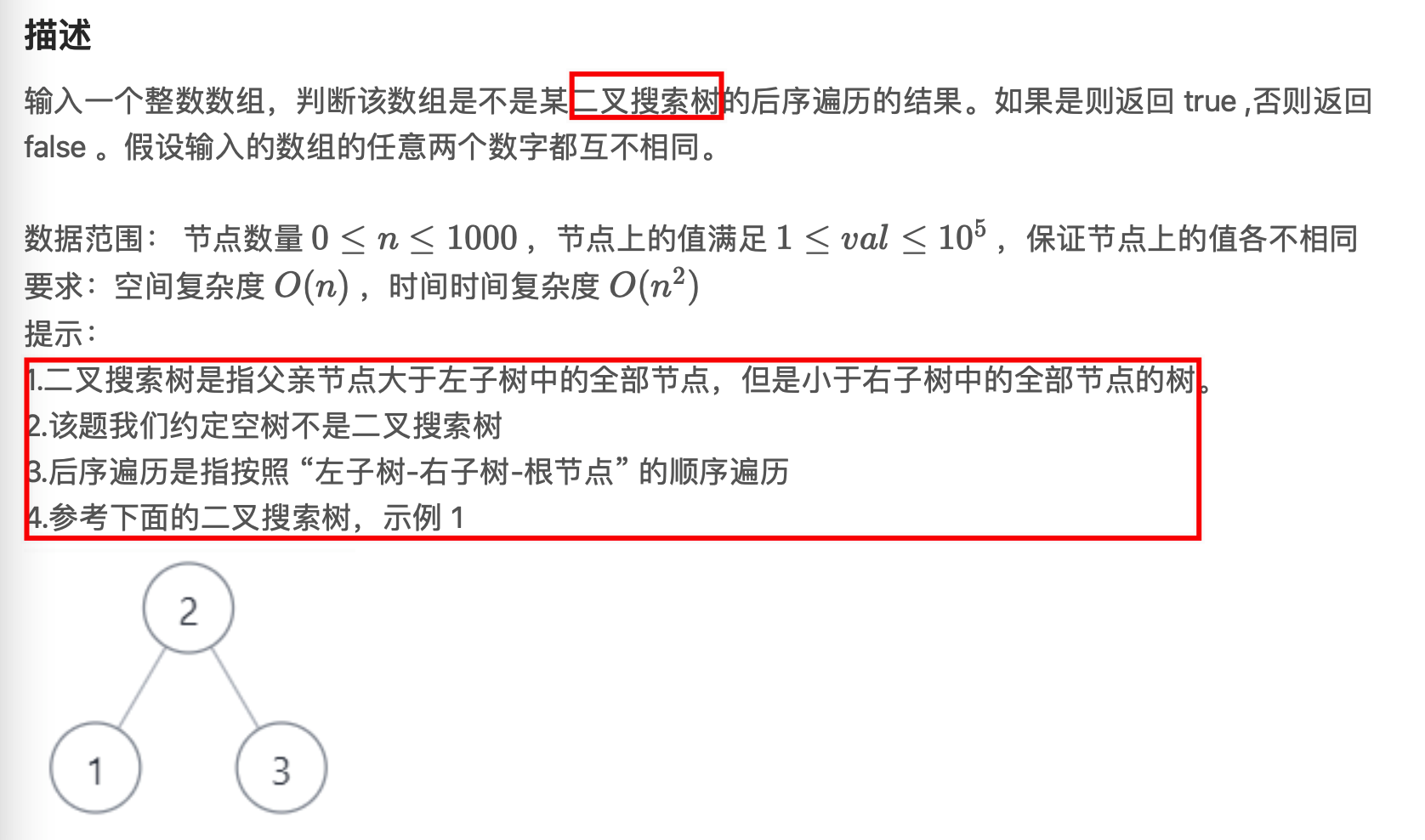
Knowledge supply:
Binary search tree
The left subtree is always greater than the root node, and the right subtree is always greater than the root node
As shown in the figure:
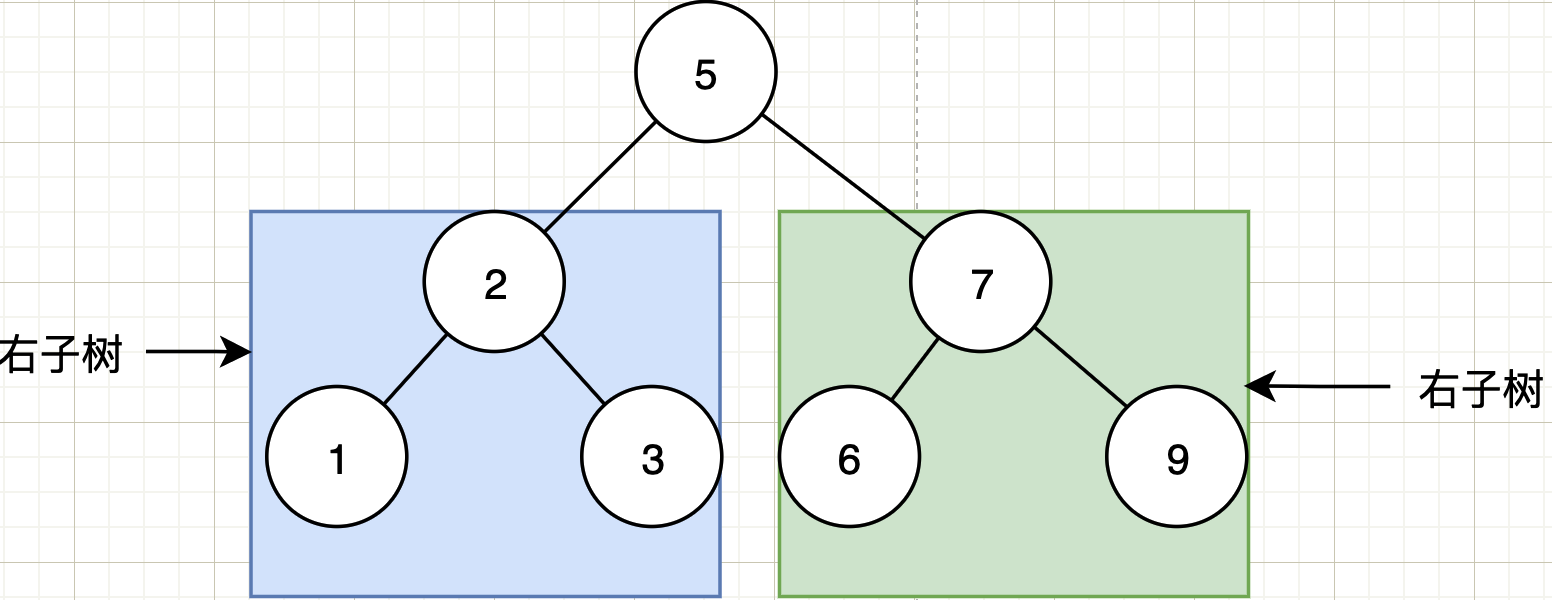
Subsequent traversal:
The subsequent traversal of the binary search tree in the above figure is as follows:
1->3->2->6->9->7->5
Idea:
In the knowledge supply, we can see that the characteristic of binary search tree is that the left subtree is larger than the root node and the right subtree is larger than the root node. Then we only need to find the root to judge whether the left subtree is smaller than the root node and whether the right subtree is larger than the root node
So now there is a problem is how to find the root?

It is still in the knowledge supply. The subsequent traversal first traverses the left subtree, then the right subtree, and then the root. Then the last node of the subsequent traversal is the root of the tree (if you are confused, see the knowledge supply or this article before you) Binary tree Foundation)
Code implementation:
Main logic
bool VerifySquenceOfBST(vector<int> sequence)
{
if(sequence.empty())//Special treatment, beware of fraud
{
return false;
}
return VerifySquenceOfBSTHelp(sequence,0,sequence.size()-1);//Recursive start judgment
}
Judgment part
bool VerifySquenceOfBSTHelp(vector<int>& sq,int start,int end)
{
if(start>=end)//When you have only one and element, it means that there is no element to judge in comparison
{
return true;
}
int root=sq[end];//The last element of the sequence is the root
//Partition interval
int i;
for(i =start; i<end;i++)//end is the root, so less than once
{
if(sq[i]>root)//If it is larger than the root, it means that i is already a right subtree
{
break;
}
}
for(int j =i;j<end;j++)//Right subtree
{
if(sq[j]<root)//If a node in the right subtree interval is less than the root, it is not a binary search tree
{
return false;
}
}
//recursion
return VerifySquenceOfBSTHelp(sq, , )&&VerifySquenceOfBSTHelp(sq, , )
}
interval analysis
First traversal:
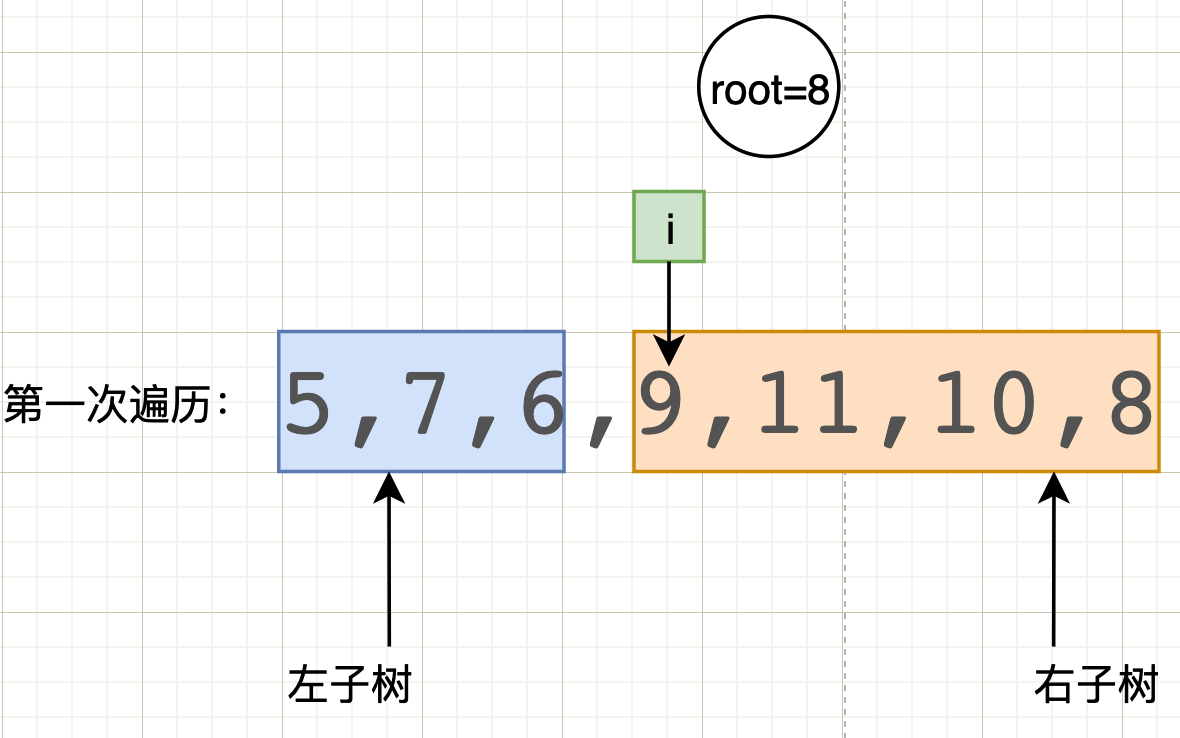
Left subtree start
From the first traversal, we can see that the start of the left subtree is still the starting position of the sequence, that is, the start of the current node
Left subtree end
From the first traversal, it can be found that the end of the left subtree is the previous position of i, so the end of the left subtree is i-1
Right subtree start
From the first traversal, we can find that the start of the right subtree is actually the current position of i, so the start of the left subtree is i
Right subtree end
After the first traversal, the current root node is no longer useful to us, so the end of the right subtree is the current end-1
return VerifySquenceOfBSTHelp(sq,start ,i-1 )&&VerifySquenceOfBSTHelp(sq,i ,end-1 );
Title Link
First question
Second question
Question 3
Nagging at home
The weather is a little cold recently. Please keep warm. Today happens to be January 1, 2022. I wish you a happy new year, a new atmosphere in the new year, get rid of your bad habits and keep the good habits of last year
